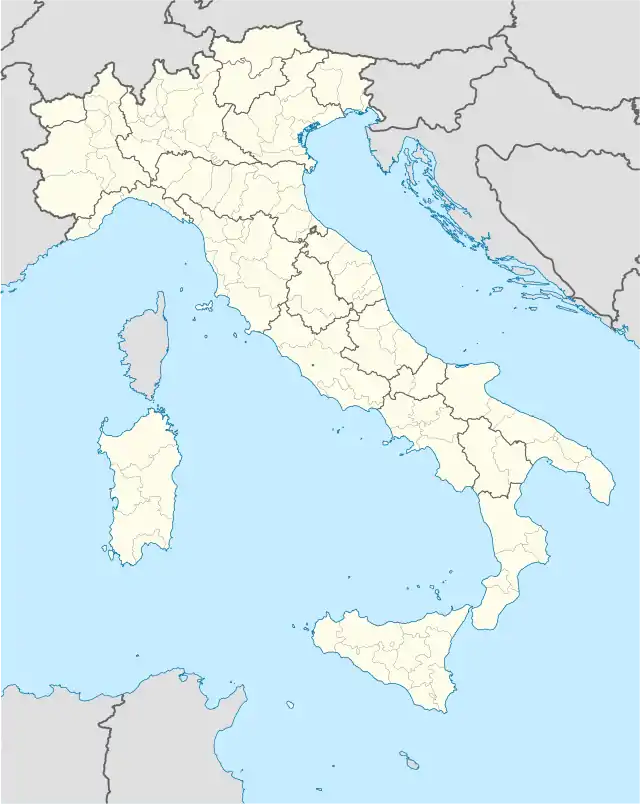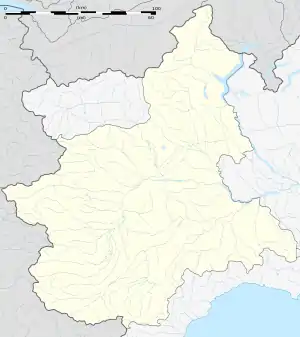Arquata Scrivia
Arquata Scrivia (local dialect: Auquâ) is a comune (municipality) in the Province of Alessandria in the Italian region Piedmont, located about 100 kilometres (62 mi) southeast of Turin and about 35 kilometres (22 mi) southeast of Alessandria.
Arquata Scrivia
Auquâ | |
|---|---|
| Comune di Arquata Scrivia | |
 | |
 Coat of arms | |
Location of Arquata Scrivia 
| |
 Arquata Scrivia Location of Arquata Scrivia in Italy  Arquata Scrivia Arquata Scrivia (Piedmont) | |
| Coordinates: 44°41′N 8°53′E | |
| Country | Italy |
| Region | Piedmont |
| Province | Alessandria (AL) |
| Frazioni | Rigoroso, Sottovalle, Varinella, Vocemola |
| Government | |
| • Mayor | Alberto Basso |
| Area | |
| • Total | 23.4 km2 (9.0 sq mi) |
| Elevation | 248 m (814 ft) |
| Population | |
| • Total | 6,323 |
| • Density | 270/km2 (700/sq mi) |
| Demonym(s) | Arquatesi |
| Time zone | UTC+1 (CET) |
| • Summer (DST) | UTC+2 (CEST) |
| Postal code | 15061 |
| Dialing code | 0143 |
| Website | Official website |
Arquata Scrivia borders the following municipalities: Gavi, Grondona, Isola del Cantone, Serravalle Scrivia, and Vignole Borbera.
History
It is located on the left bank of the Scrivia river. The name derives from the Latin arcuata (arched), due to the presence of an aqueduct supplying the nearby Roman town of Libarna, on the Via Postumia.
It is mentioned as a castrum (fortress) in the 11th century, and later was contended between the Republic of Genoa and the commune of Tortona: after they signed a peace in 1227, they dismantled the castle. In 1313 it was given by emperor Henry VII to the Genoese Spinola family, who were named marquisses of the town in 1641. Three years later Arquata obtained also the right to strike coins of its own.
It was sacked by French troops in 1796. The following year it was annexed to the Ligurian Republic. After the fall of Napoleon Bonaparte, it became part of the Kingdom of Sardinia-Piedmont. During the First World War, a team of Red Cross nurses headed by Mrs Marie Watkins used the theatre at Arquata Scrivia as a recreation room and canteen for British soldiers.
| Wikimedia Commons has media related to Arquata Scrivia. |
References
- "Superficie di Comuni Province e Regioni italiane al 9 ottobre 2011". Istat. Retrieved 16 March 2019.
- All demographics and other statistics: Italian statistical institute Istat.
- "Popolazione Residente al 1° Gennaio 2018". Istat. Retrieved 16 March 2019.